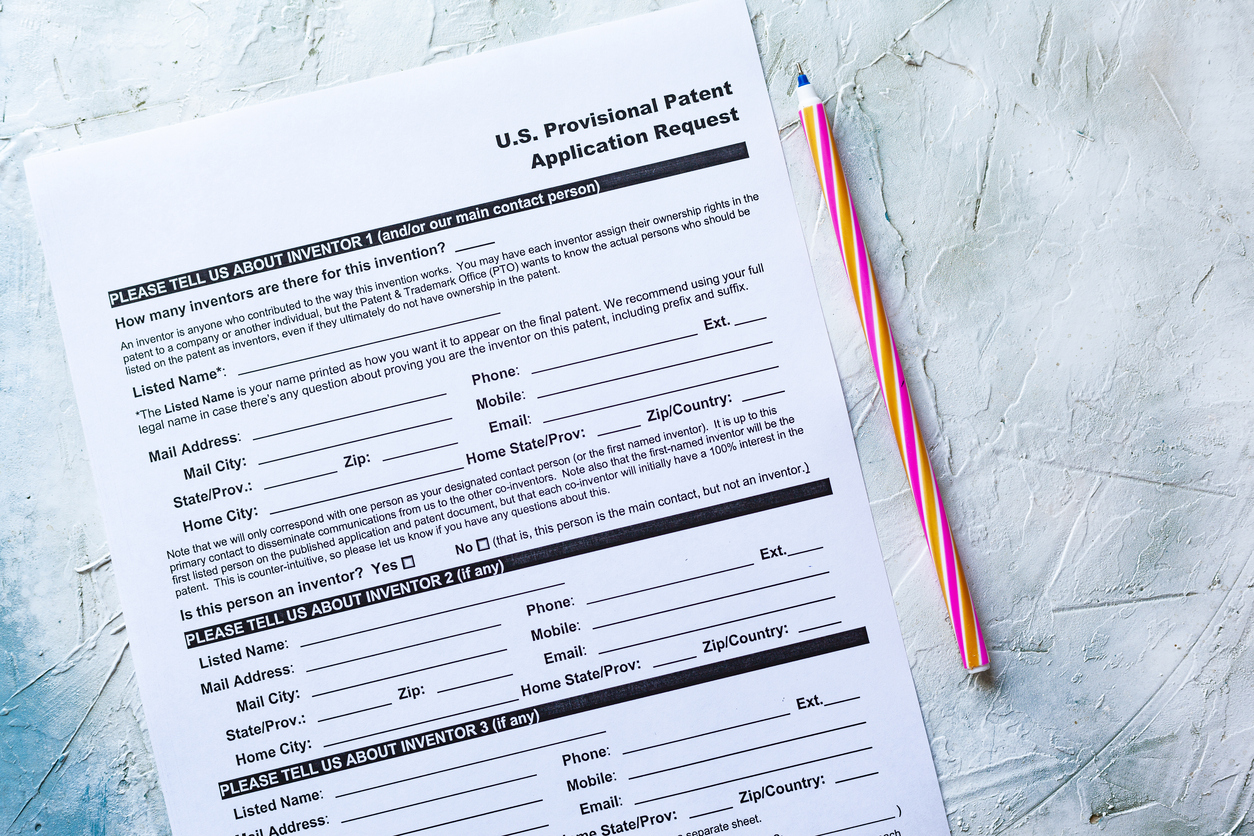A Step-By-Step Guide To Filing Your Provisional Patent Application
Innovation is the lifeblood of business, but protecting your unique invention is equally crucial. A provisional patent application is a vital step to safeguarding your intellectual property while at the same time giving you the freedom to perfect your concept. Understanding and navigating the process of filing a provisional patent application is important to obtaining your patent protection.
Understanding the Basics of a Provisional Patent Application
A provisional patent application is a preliminary step in securing patent protection for your invention. Essentially, it’s a legal document filed with the United States Patent and Trademark Office (USPTO), which allows you to establish an early effective filing date in a later filed non-provisional patent application. It allows you to legally state that your invention is “patent pending,” which can be an effective deterrent for those who might want to infringe upon your idea.
The key benefits of a provisional patent application lie in its relative affordability and the flexibility it offers. It is less expensive to file than a non-provisional patent and does not require a formal patent claim or any information disclosure statement. It gives inventors up to a year to develop their product, conduct market studies, and seek funding before committing to the more complex and costly non-provisional patent application. However, it’s important to note that a provisional patent application won’t lead to a granted patent unless followed by a non-provisional patent application within 12 months.
Preparing for the Application
Before embarking on the provisional patent application process, a few preparatory steps must be taken. The first step is evaluating the patentability of your invention. Not every invention qualifies for a patent; the USPTO requires that the invention be new, non-obvious, and useful. Moreover, you should also consider whether your invention provides a significant advantage over existing products or methods that would warrant the cost and effort of obtaining a patent.
Conducting a preliminary patent search is another important part of the preparation process. This involves researching previously granted patents and published patent applications to determine if your invention or a similar one has already been patented. Additionally, it’s a good idea to prepare a detailed description of your invention, including its purpose, composition, and operation. This should be accompanied by drawings, if possible, to provide a clear visual representation of your invention. The more comprehensive and detailed your description and drawings, the stronger your provisional patent application will be.
Filing the Provisional Patent Application
Once you have a detailed understanding of your invention and its patentability, you can proceed to fill out the application form for your provisional patent. The application should include the title of the invention, the names of all inventors, and a written description of the invention. It is also advisable to include any drawings necessary to understand the invention. The information should be detailed enough that others in your field would be able to make and use the invention.
Filing the application with the USPTO is a straightforward process. The USPTO accepts applications online through its Electronic Filing System (EFS-Web) or the application may be filed by mail. A filing fee is also required, the amount of which varies depending on the size of your entity. For instance, fees for micro-entities (small businesses, nonprofits, or independent inventors meeting certain criteria) are lower than for larger companies.
After you’ve filed the application and paid the fee, you’ve taken the initial steps toward protecting your invention and you have the right to use the term “patent pending” in relation to your product.
After Filing the Application
Once you have filed your provisional patent application, you’ve secured a “patent pending” status for your invention for one year. This is a valuable period where you can further refine your invention, test the market, seek investors, or work on marketing and manufacturing plans without the fear of losing your claim to the invention. It’s important to remember, though, that the USPTO does not review provisional applications for patentability. Therefore, your patent pending status does not mean your invention has been examined or approved, but merely that you have staked your claim to the invention.
The countdown to filing a non-provisional patent application begins once the provisional patent application is filed. If you don’t file the non-provisional application within 12 months, you risk losing the benefits provided by the provisional application. A provisional patent application alone cannot lead to a granted patent; a non-provisional application is necessary to proceed toward securing a patent.
Bold Patents Can Help You With Your Provisional Patent Application
Navigating the complexities of patent law can be daunting, especially for first-time inventors or small businesses. An experienced patent attorney can provide invaluable assistance, from conducting a thorough patent search to ensuring that your provisional patent application is detailed and comprehensive, thus increasing the chances of your invention being protected. They can guide you through the subsequent non-provisional application process, ensuring you don’t miss the crucial 12-month filing deadline.
Bold Patents is ready to assist you in obtaining the protection of your innovative ideas. Our experienced patent attorneys understand the importance of your intellectual property and are committed to helping you safeguard it effectively. Taking the right steps today will create a strong foundation for your invention’s future success. Don’t hesitate to reach out to us for a complimentary Discovery Call. We’re here to simplify the patent process for you.
